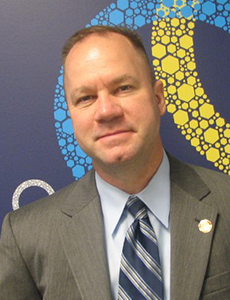At RISKWORLD 2023: Training Is Vital for Active Shooter Survival

One week before their May 1st presentation at RIMS’ 2023 RISKWORLD event in Atlanta, Ike Jenkins and Marc Vincent updated their slides with the latest figures on U.S. mass shootings. By the time they’d checked into their hotels, the figures were already outdated.
By the end the conference, the tally had gone up again.
The seemingly nonstop cadence of U.S. mass shootings is top of mind for many. The number of mass shootings as of April 30 this year has seen a 135% jump from the same date just five years ago. Mitigating the risk of active shooter incidents has never been more of an important topic for the risk management community.
Coverage for these incidents exists. Active assailant coverage was first offered in 2011 and has seen a rise in take-up in the last five to ten years. Coverage after the act, though, is small comfort to the people and organizations impacted by these tragic events.
Mitigating risk is about training, said Jenkins, director of risk management for the University of Delaware. “The active shooter does not care about your policy, the active shooter does not care about your insurance coverage.”
To put an even finer point on it: “If you’re not doing active shooter training, you’re doing a disservice to your employees,” said Vincent, emergency preparedness manager for the Georgia World Congress Center Authority, this year’s RIMS’ RISKWORLD venue.
Piggybacking on other kinds of emergency training is ineffective, said Vincent. He raised the well-known Columbine High School shooting as an example.
Two weeks before the shooting, the high school had done a routine tornado drill. So when the first shot was fired on April 20, 1999, teachers began following tornado drill procedures, instructing students to crouch under desks and cover their heads — leaving them essentially sitting ducks.
With appropriate training, said Vincent, it’s likely some or even all of those who perished that day might have survived.
Avoid, Deny, Defend
Vincent went into detail about the active shooter training that every employee of the Georgia World Congress Center Authority receives, which can be summed up with three words: Avoid. Deny. Defend.
Part one, avoid, means getting away from the action, if it can be done safely. Know where the exits are, leave if you can, and call 911 once you’ve reached safety. “Avoidance is your first and best option,” said Vincent.
If primary exits are blocked, consider tertiary exits. That could mean breaking windows or even breaking through drywall in order to get to a safe exit.
If you can’t avoid, deny. That means actively denying entry, he explained, securing all means of access to your location. If the door or doors can’t be surely locked or blocked, try tying it off with a belt, a purse strap, anything available. Even outward opening doors can be secured this way, which is a called a tactical cinch, he explained.
When denying access, it’s essential for the shooter to think the room you’re sheltering in is empty. That means turning off the lights and ensuring everyone in the room puts their phone on silent and remains quiet.
When you can no longer deny, your last option is to defend. “It’s all about positioning,” Vincent said. Look for any weapon of opportunity. With no other options, even having the opportunity to grab the gun muzzle and point it away can save lives.
When it comes down to it, said Vincent, remember that “shot” doesn’t mean dead, unless it involves the head or vital organs.
The Role of Emergency Responders
Organizations that opt out of training, believing the police will handle it if push comes to shove, will not fare well. The average police response time is three minutes. “Three minutes is an eternity” when bullets are flying and you’re afraid for your life, Vincent said.
Even when reinforcements arrive, training is essential so that everyone knows how to behave to stay safe. Remember that when the police arrive on the scene, the situation is still in chaos and the police may not yet know who or where the perpetrator is.
It’s important for everyone on the scene to follow commands and remain still and to show their palms. A phone in someone’s hand could easily be mistaken for a gun in a tense high-stress situation. Police may behave in ways the public does not expect in those situations. Knowing how to act can reduce the risk of someone being injured by “friendly fire.”
Basic emergency medical attention must also be part of the training if the goal is to minimize loss of life. Keep in mind that EMTs will not be allowed on the scene until law enforcement has declared the area safe. That means people on site should have basic knowledge of what to do to increase the chances of survival for anyone injured.
Seek training on basic life-saving procedures, said Vincent. “But if you don’t do anything else, Google ‘stop the bleed’ ” to find information you can share with your team.
For organizations newly embarking on or updating their active shooter plan, look to emergency responders as a resource for developing your plan, and invite local responders to tour your facility and familiarize themselves with it.
Insider tip from Vincent: “If you feed them, they will come.” &











